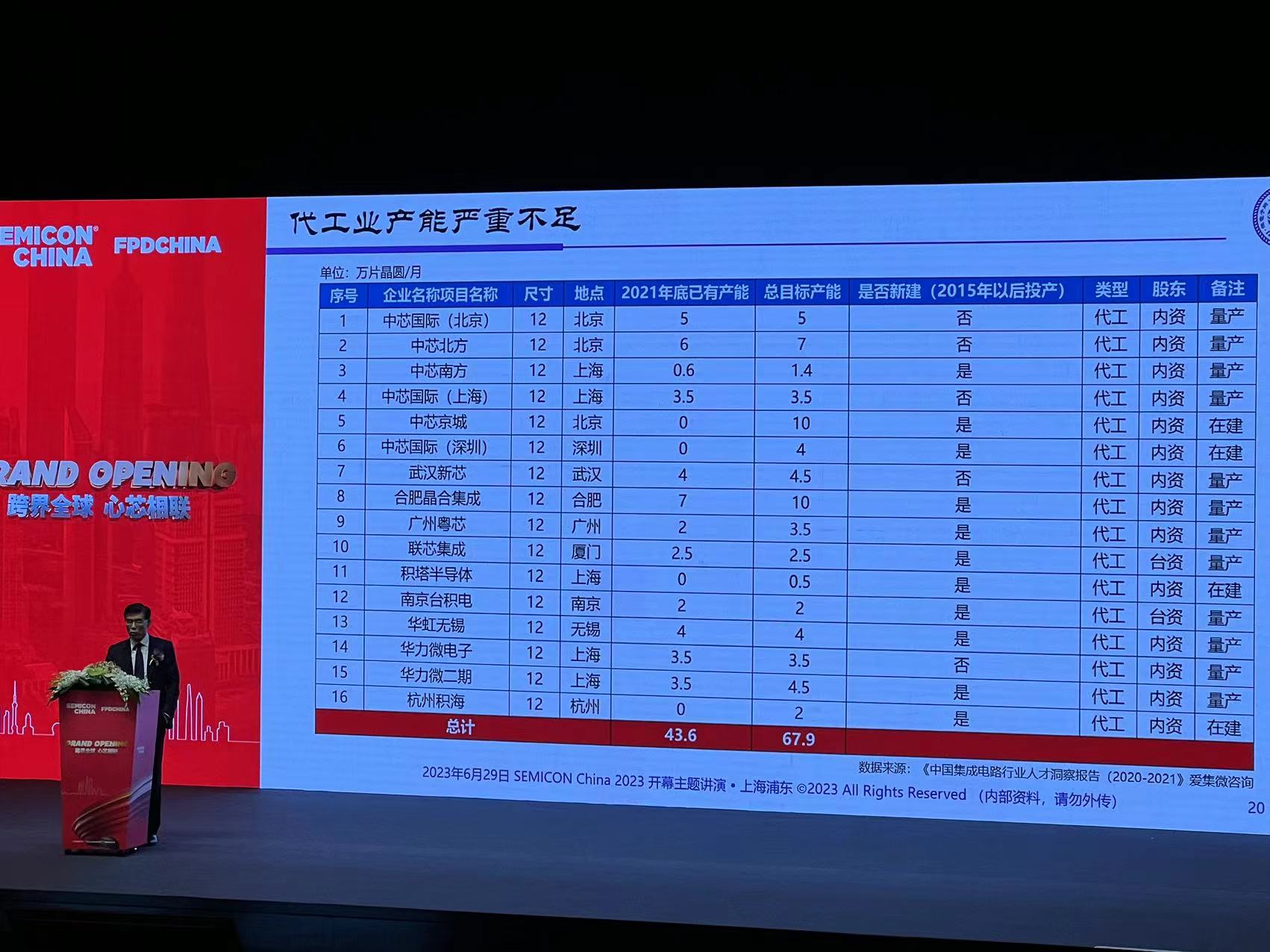
By Li Panpan
(JW Insights) Jun 30 -- Wei Shaojun, director general of the IC Design Branch of the China Semiconductor Industry Association, said the interrupted global supply chain has brought severe challenges to China's semiconductor industry, and "China should promote the re-globalization of the semiconductor industry."

Wei expressed his proposition in his keynote speech at SEMICON China 2023, held in Shanghai from June 29 to July 1.
Wei Shaojun said, “The global semiconductor supply chain had been interrupted. It started with targeted sanctions on China, worsened by the pandemic and chip shortage, bringing about doubts about the globalized supply chain. In this process, to exclude China from the global supply chain has become a way of thinking for some countries. Some companies were pushed to open factories in the US. Small circles were set up like Chip4 Alliance. These are intentional disruptions of the global supply chain at political will," said Wei.
He continued that "suppressing a certain country’s semiconductor industry will stagnate globalization and fragment the global supply chain. Some Western entrepreneurs share similar views on this issue that globalization could come to an end.”
A disrupted globalization could bring severe challenges to the Chinese semiconductor industry, which has a typical model with separated sectors in design, manufacturing, and packaging. The scale of China's semiconductor manufacturing is still very small. Although it had a high compound annual growth rate in the past few years, most has been contributed by foreign-funded enterprises in China.

Currently, China's electronic manufacturing service capacity is seriously insufficient. The 2021 data showed that the monthly production capacity for 12 inches chips was only close to 440,000 pieces, while the market demand was 1.5 million pieces, with a shortage of 1 million, said Wei.
Apart from the EMS capacity shortage, Chinese semiconductor companies also suffer from a severe lack of innovation. Data from 62 chip design companies listed on the STAR Market shows their average gross profit rate at only 34.2% in 2022. Their total spending on R&D was only $2.91 billion in 2022. In other words, to use this $2.91 billion together for a 5nm chip, it could be roughly enough to make ten pieces. It means the R&D amount is far from being enough, said Wei.
Facing these challenges, Wei pointed out three key ways to push China's semiconductor industry's re-globalization. First, China should adopt an open and inclusive attitude and engage in healthy competition. Although other countries are elbowing out China and undermining semiconductor globalization, China cannot stand still and self-isolate ourselves.
Secondly, China should seek development based on itself and push the semiconductor industry's re-globalization based on self-reliance and self-improvement. The third is to produce high-end chips urgently needed in the Chinese market but restricted by Western bans.
There are few shortcuts to take in semiconductor industry development, and Chinese manufacturers still should follow the special laws, concluded Wei.
RELATED
-
Apple’s Chinese supplier Luxshare Precision gives up $330 million investment in India
11-20 17:28 -
European Commission President von der Leyen will visit China in wake of the EU’s ongoing probe into China’s subsidies on EV industries
11-20 16:59 -
Local governments in China come up with policies to support AI development in 2023
11-17 19:12
READ MOST

No Data Yet~







